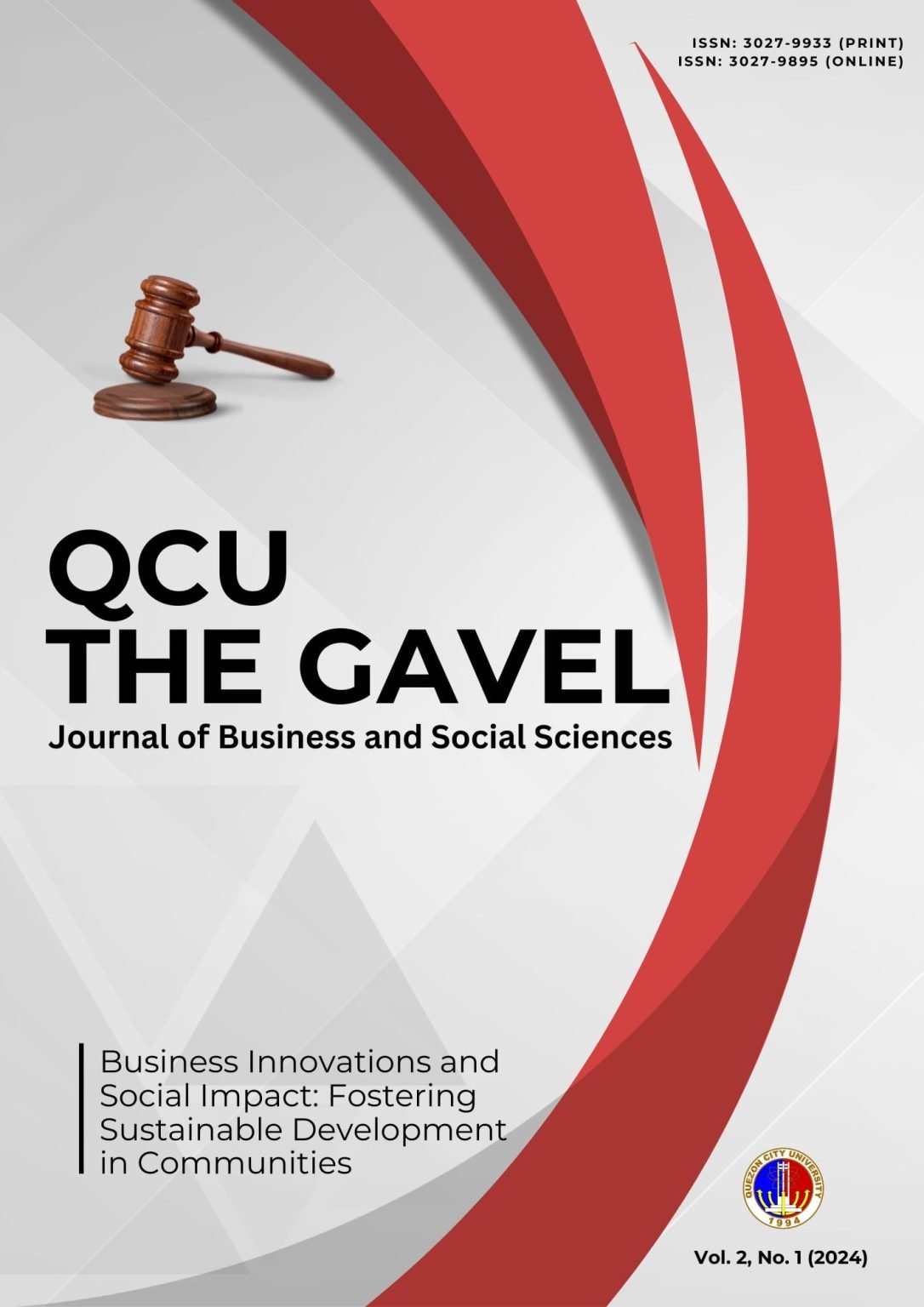Management Of an Aeronautics and Technology Educational Institution in The Philippines
DOI:
https://doi.org/10.64807/xz034r33Abstract
The empirical investigation focused on ascertaining the management of WCC Aeronautical and Technological College and identifying the problems met in line with the processes and practices alongside the operation of the said entity. The researcher adopted the descriptive cross-sectional design with the aid of a questionnaire-checklist as main instrument in gathering data. The respondents in the study were the eight Department Heads, ten program heads, one Campus Director, and two Academic Heads. The findings of the study showed that the management of Binalonan Campus moderately practiced organizing, while the management of North Manila Campus satisfactorily practiced organizing. The extent of managerial practices and process implementation as to directing in the management of the WCC Aeronautical and Technological College Binalonan Campus and North Manila had an overall mean rating of 4.17 or with a descriptive rating of moderately practice. The two campuses moderately practiced planning, controlling, directing, and organizing. The problems faced by the top to middle-level educational managers of WCC Aeronautical and Technological College in two campuses were slightly serious, while the problems met by the top to middle-level educational managers of WCC Aeronautical and Technological College in North Manila Campus were moderately serious. The researcher concluded that the extent of managerial practices and process implementation in the management of the two campuses is the same, which affects the implementation of consolidate policy and standard of WCC aviation school in general. The management of WCC Aeronautical and Technological College for both Binalonan and North Manila Campus should conduct monthly meetings to enhance practice in financial planning, marketing planning and organizing. Further study is recommended.
Keywords:
aeronautics and technology education institution, planning, controlling, directing, organizingReferences
Abdel, W., Rowena, M., & Robyn, R. (2010). Determinants of innovation in SMEs: A study of manufacturing firms in Australia. International Journal of Innovation Management, 14(1), 35-61.
Andriopoulos, C., & Dawson, P. (2010). Managing change, creativity and innovation. SAGE Publications.
Anh, N. T. T. (2013). One Village One Product (OVOP) and local economic development in Asia: The case of Vietnam. Sustainability, 5(10), 4416-4430. https://doi.org/10.3390/su5104416
Beck, T., & Demirguc-Kunt, A. (2016). Small and medium-size enterprises: Access to finance as a growth constraint. Journal of Banking & Finance, 30(11), 2931-2943.
Brink, T., & Madsen, E. L. (2016). The role of creativity in entrepreneurship and innovation. Innovation: Organization & Management, 18(1), 3-9. https://doi.org/10.1080/14479338.2016.1139446
Burgelman, R. A. (2012). Strategy is destiny: How strategy-making shapes a company's future. Organization Science, 23(2), 299-310.
Chesbrough, H. (2013). Open business models: How to thrive in the new innovation landscape. Harvard Business Review Press.
Cooper, R. G., & Kleinschmidt, E. J. (2016). Winning businesses in product development: The critical success factors. Research-Technology Management, 59(1), 21-31. https://doi.org/10.1080/08956308.2016.1118182
Dalberg. (2011). Small and medium-sized enterprises: Key drivers of competitiveness and employment in South Africa. Dalberg Global Development Advisors.
Food and Agriculture Organization of the United Nations. (2017). Innovation in family farming. Food and Agriculture Organization of the United Nations.
Guiné, R. P., Ramalhosa, E., & Cruz-Lopes, S. (2016). Innovation as a key driver of economic growth: Evidence from Portugal. Journal of Innovation Management, 4(1), 24-50.
Hurley, R. F., & Hult, G. T. M. (2018). Innovation, market orientation, and organizational learning: An integration and empirical examination. Journal of Marketing, 82(3), 1-20.
Jordana, J. (2015). The food industry and healthy diets: Trend or dead end? Catalan Journal of Communication & Cultural Studies, 7(2), 213-218.
Llanto, G. M. (2010). Philippine small and medium enterprises: Structures, performance, and credit access survey. Philippine Institute for Development Studies.
Llanto, G. M., & del Prado, F. M. (2015). Role of innovation in achieving competitive advantage and sustainable growth: A case study of manufacturing SMEs in the Philippines. Philippine Institute for Development Studies.
Organisation for Economic Co-operation and Development. (2017). Innovation, productivity and sustainability in food and agriculture. OECD Publishing.
Pachava, S. (2018). Innovation in small and medium-sized enterprises (SMEs) in India: A case study of food processing sector. Indian Journal of Economics and Development, 6(2), 47-52.
Pandey, R. (2018). Trends in the food industry: Challenges and opportunities. Journal of Food Science and Technology Nepal, 8, 43-48.
Philippine Institute for Development Studies. (2017). Philippine innovation index.
Philippine Information Agency. (2017, March 23). Innovation powers food SMEs in Pangasinan.
Quickie, R. A. (2019). Measuring innovation in small and medium-sized enterprises. International Journal of Technology Management, 79(1/2/3), 1-19.
Sajid, A., Al-bloush, A. A., Al-Faieq, A. F., Monsef, H., & Sadegh, A. M. (2015). The role of innovation in competitive advantage of companies. European Journal of Business and Management, 7(27), 2222-2839.
Ueasangkomsate, P. (2016). A study on the competitiveness of SMEs in the food industry in Thailand. Procedia Economics and Finance, 35, 127-135.
Wyness, L., Butriss, J., & Stanner, S. (2012). Reducing food poverty and inequalities in the UK: The role of the food and drink industry. Nutrition Bulletin, 37(3), 286-292.
Yokakul, N., & Zawdie, G. (2011). National innovation systems in less successful developing countries: The case of Thailand. International Journal of Technology Management & Sustainable Development, 10(2), 157-176.
Downloads
Published
Issue
Section
License
Copyright (c) 2024 Roger A. Martinez Jr. (Author)

This work is licensed under a Creative Commons Attribution 4.0 International License.
All articles published in QCU Journals are made available under the Creative Commons Attribution 4.0 International License (CC BY 4.0).
This license allows for:
- Sharing – copying and redistributing the material in any medium or format.
- Adapting – remixing, transforming, and building upon the material for any purpose, including commercial use.





